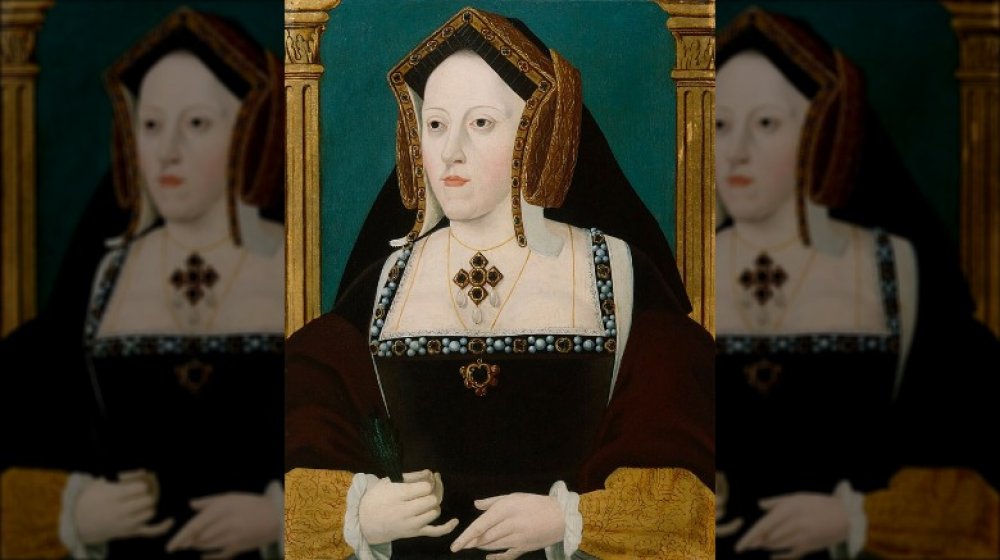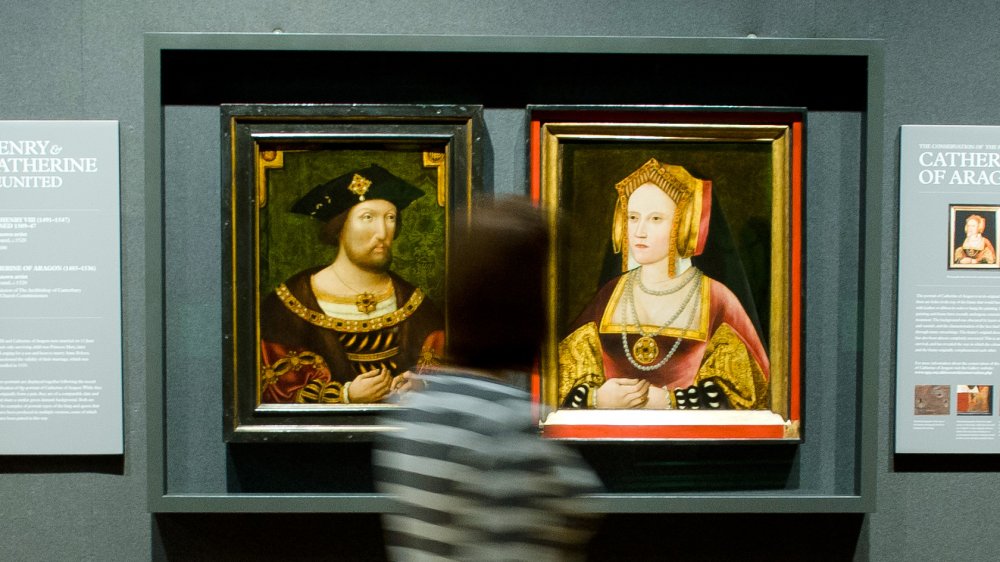The Tragic Death Of Catherine Of Aragon
No doubt she knew the job was dangerous when she took it. After all, Catherine of Aragon was no stranger to palace intrigue — she was the daughter of Spanish royalty, after all; Isabella, Queen of Castile, and King Ferdinand II of Aragon. She was betrothed to the future King of England, Arthur, first-born son of King Edward VII, as a child. Political advantage? Some. Monetary advantage? According to the BBC's History Extra, most assuredly; she came with a hefty dowry that would come in more than handy in replenishing the perennially tapped English royal treasury. Her new husband died just months into the marriage, perhaps of sweating sickness. They were but 15 when they tied whatever knot it was they tied, and her widowed father-in-law seriously considered marrying her himself. Mostly for the money. Her mother, not surprisingly, objected fairly strenuously, and so she was matched with Arthur's younger brother, Henry, five years her junior and now headed for the throne of England.
Henry became Henry VIII and then married Catherine after first obtaining special permission from the Catholic Church to marry his brother's widow, which church law forbade at that time, as related by Biography. There were children, mostly stillborn, and but one child, Mary, who survived to adulthood. Scholars differ on whether Henry and Catherine were ever truly in love. Some suggest he not only fell in love with her, but truly loved her, when not consorting with his mistresses, anyway, for the rest of his life.
The marriage may or may not have been happy
His need for a male heir trumped that, and church, and foreign alliances, and everything else. He made the argument that they were married illegitimately, that Rome was wrong to provide permission. She argued that her marriage to Arthur had never been consummated, and therefore was never validated in the first place. (Arthur, for his part, emerged from their bedchamber after their wedding night and told a servant to "bring me a cup of ale, for I have been this night in the midst of Spain." He was 15.)
Whatever the truth of the matter, Henry was determined. He broke with Rome over the issue, creating the Church of England, had his marriage to Catherine annulled, and married one of Catherine's ladies-in-waiting, Anne Boleyn, the second of his six wives. Catherine, however, continued to refer to herself as the Queen of England, as did her servants. She had become popular among the people of the realm, and Henry tried to move her out of the public eye, in essence banishing her to a series of estates and castles and forbidding contact with their daughter. Her health deteriorated as she did penance, leaving her one room at Kimbolton Castle only to attend Mass. Even in her last days Henry denied her contact with her daughter, although she was allowed a visit from the Spanish ambassador. It's hard to tell from this historical distance, but according to On the Tudor Trail, most scholars believe she died of heart cancer, age 50.

